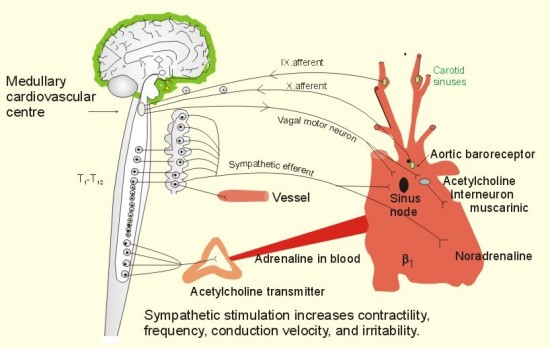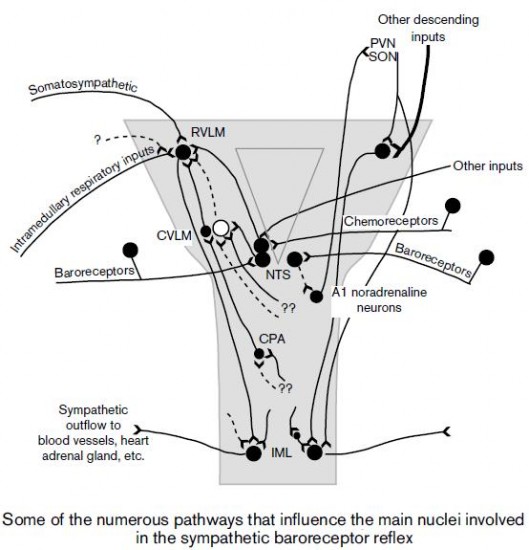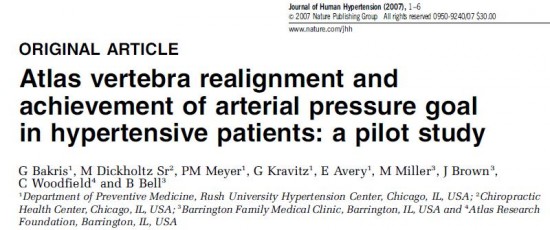 Blood pressure is on the rise. And managing the condition is multi factorial from lifestyle, to dietary, to emotional, to pharmacological and non-pharmacological. The purpose of this blog post is to shed some light on the neurological implications of a specific chiropractic adjustment and why chiropractic should be included in the management of such cases.
Blood pressure is on the rise. And managing the condition is multi factorial from lifestyle, to dietary, to emotional, to pharmacological and non-pharmacological. The purpose of this blog post is to shed some light on the neurological implications of a specific chiropractic adjustment and why chiropractic should be included in the management of such cases.
Firstly, is high blood pressure a disease? No. High blood pressure is a window to the function of the nervous system. It’s like looking at the dashboard of your vehicle and seeing the rev counter hovering in the red at 6,000 RPM – but attempting to treat it by placing a smiley sticker over the dash instead of addressing the engine beneath it. High blood pressure is a reflection of the stress the nervous system is under and undulates according to the ebbs and flows of your environmental stressors. Your heart changes its beat in accordance with life’s undulating challenges.
Why are there so many different blood pressure medications? The blanket “napalm” approach to lowering blood pressure is simply a test-and-measure procedure to see which chemical manipulates the system best, achieving a desired “number” or systolic pressure, and then claiming the system is now healthy. There are a score of different antihypertensive drugs on the market, falling into the broad categories of drugs that narrow blood vessels, widen blood vessels, affect the kidneys, slow down the heart muscle, or reduce nerve signals going to the heart.
Click here to read Don’s high blood pressure chiropractic story.
The sneaky bastard…
How is blood pressure regulated though? The area of the brain responsible for regulating blood pressure is the medulla oblongata – a part of the brainstem which is directly connected to the spinal cord and thus acts as the transit point of all information going to and from the brain. The brainstem sits at the level of C1, or atlas, the top vertebra of the spine. The medulla oblongata regulates blood pressure in the body through the use of what are called baroreceptors. These receptors detect changes in pressure throughout the circulatory system and then translate those changes into electrochemical signals sent to the medulla.
Blood pressure is changed in a multitude of ways by the ingenious nervous system of the human body. When we get stressed, a bunch of nerves fire from the middle of our spine and they directly influence the rate and rhythm of our heart and lungs, and the stress hormones that are pumped out from the adrenal glands. So when we are under intense situations, our fight/flight response kicks in and signals are sent via the brainstem to the spine to make the necessary changes to our heart, lungs and hormones so we can breathe deeper, run faster and generate more power. When the threat is gone though, negative feedback is sent to the brainstem and it in turn tells all the organs to relax and return to normal. The trouble comes in when this feedback loop gets messed up and inappropriate signals are being sent not only by the brainstem, but by the spine too, all the time, even when we think we are supposedly not “under threat”. However the complexity of subconscious stress keeps the fight/flight elevated for extended periods of time because of all the things we have to juggle in modern day times.
Click here to read Gill’s high blood pressure chiropractic story.
What does a specific chiropractic adjustment do? Quite simply, a specific adjustment to C1, the top vertebra, reduces the heightened tone of the fight/flight system in the middle of the spine which has nerve projections to the heart, lungs and kidneys – the major organs of blood pressure regulation. This happens because there are nerve cells around the area of C1 with direct input into the brainstem and also project to the middle of the spinal cord. Now think about this: One adjustment changes the way all three organs work almost simultaneously by way of influencing their main control centre, the medulla oblongata in the brainstem. The multitude of drugs which each address only one system at a time, say either the kidneys or the heart, do not affect the actual fuse box in the brainstem. This fuse box becomes discombobulated through mental, emotional and chemical stress (which is often why adding more chemical stress to the situation doesn’t help).
What about evidence? I always find this the fun bit, because there’s heaps of evidence, anecdotally in practice and clinically controlled trials in research papers. People just tend to see only what they want to see based on their own preconceived ideas about a topic. Studies in rats and humans show that there is an intimate connection between the nerve cells around C1, the brainstem, and the sympathetic (or fight/flight) portion of the spinal cord. In analgesic studies, it has been shown that there are direct projections of nerves from C1 to the thoracic spinal cord – where the fight/flight area is – that have an excitatory effect, raising blood pressure. What that means is that disturbance, distortion or “misalignment” of the upper spine can change the way the entire nervous system works and one resulting side effect may be high blood pressure. This is why it is imperative C1 is checked and corrected on a regular basis for individuals with high blood pressure by a chiropractor.
Another study that was conducted at the University of Chicago also reported quite dramatic changes in blood pressure following chiropractic care. In this randomised controlled trial patients with early stage high blood pressure received a very specific upper cervical (neck) adjustment. The average decrease in blood pressure was an extraordinary 17mmHg for systolic blood pressure (the top blood pressure number) and 10mmHg for diastolic blood pressure (the bottom blood pressure number). This improvement in blood pressure is similar to that seen when two different antihypertensive drugs are given simultaneously! The lead author of the study commented, “When the statistician brought me the data, I actually didn’t believe it. It was way too good to be true. But we checked everything, and there it was.” This shows how powerful even a single chiropractic adjustment can be.
To see more on this study, watch the news clip below.
To have your blood pressure checked at Spinewave, call 09 522 0025.
References:
Bakris, G. et al. Atlas vertebra realignment and achievement of arterial pressure goal in hypertensive patients: a pilot study. Journal of Human Hypertension. 2007. 21(5): 347-52.
Hall, S. R. et al. Activation of the rostral ventrolateral medulla in an acute anesthetized rodent strychnine model of allodynia. Anesthesia & Analgesia. 1999. 88: 1125-1130.
Pilowsky, M. et al. Baroreceptor reflex pathways and neurotransmitters: 10 years on. Journal of Hypertension. 2002, 20: 1675-1688.
Schreihofer, A. M. et al. Regulation of sympathetic tone and arterial pressure by rostral ventrolateral medulla after depletion of C1 cells in rat. Journal of Physiology. 2000. 529.1: 221-236.



